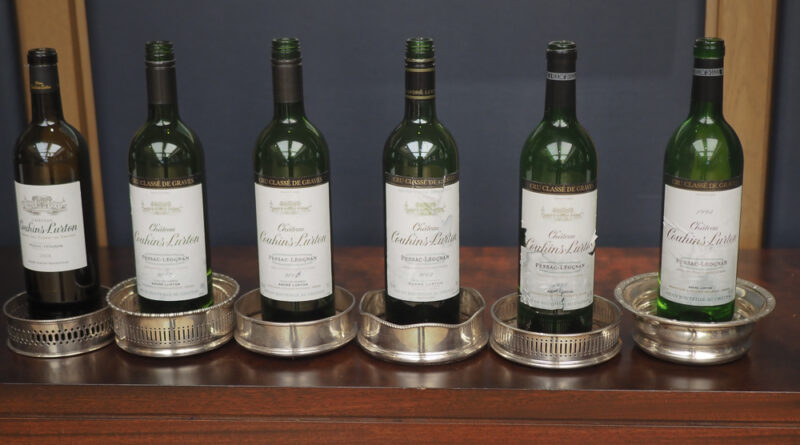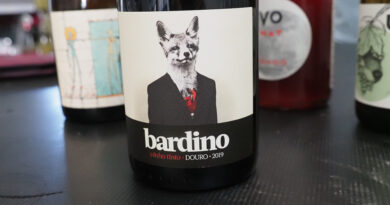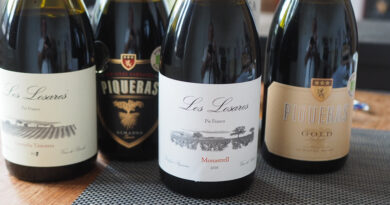Château Couhins-Lurton with Jacques Lurton: a vertical of this important white Bordeaux
Couhins-Lurton is a small but important property in the Graves region of Bordeaux. Since 1967 it has been part of the Lurton portfolio – they originally leased it, and now own it fully. Interestingly, it’s classified for its whites (in the 1959 Graves classification), but not for its reds. Since 2019 the wines have been made by Jacques Lurton, who returned to Bordeaux to head up the family’s wine interests, after working extensively abroad. He presented this tasting.
The white wine comes from a particular terroir: a 5.5 hectare gravel terrace at an altitude of 20-25 metres, over a clay-limestone bedrock. This helps maintain a steady water supply even in dry summers, and keeps the pH of the grapes low. There are also 12.5 hectares of gravelly soils at 50 m on which the red grapes are planted.
This tasting served two purposes. First, it was a chance to look at a vertical of Couhins-Lurton to show that even with 100% Sauvignon Blanc, it is possible to make an ageworthy wine in Graves – and not just a wine that survives over time, but also one that improves. The second was a chance to show, for the first time, a new project: Acte II.

‘At Couhins-Lurton we have no second label, but I have decided to introduce a completely new concept,’ says Jacques. ‘This is the concept of the cuvée. The wine is called the same name as the Château and has the same classification, but it is a cuvée and we have called it Acte II.’ The idea is that the Château is Act I, and this new wine is Act II. The difference? Here they are playing with terroir and vinification together. Acte II is a fruitier style with less ageing, but it’s meant to be a peer of the main wine in terms of quality, and the pricing is similar. ‘We have introduced amphorae in the cellars for this wine, which is fermented and aged in amphora,’ says Jacques. There is a white and red pair of Acte II wines. What does cuvée mean in this context? ‘The wine starts to be made in the vineyard. It is not a consequence of the winemaking. We have selected plots in the vineyard that go through a different winemaking process. Couhins-Lurton is small so we know exactly our terroir, and we know where the grapes can go.’ 5000 bottles of white have been made, and 10 000 bottles of red. For the 2021 vintage they have pushed the concept further, and have done carbonic maceration in amphora. ‘This is very different. It is not the declassification of the first wine that creates this wine,’ he emphasizes.
Back to the main wine. ‘Sauvignon Blanc is a very fragile variety,’ says Jacques. ‘It tends to evolve quickly, and it is very sensitive to oxygen. They press in a horizontal pneumatic press and protect the juice using inert gas. They settle for 24 h and then inoculate and go to barrel for fermentation, with 25% new oak.
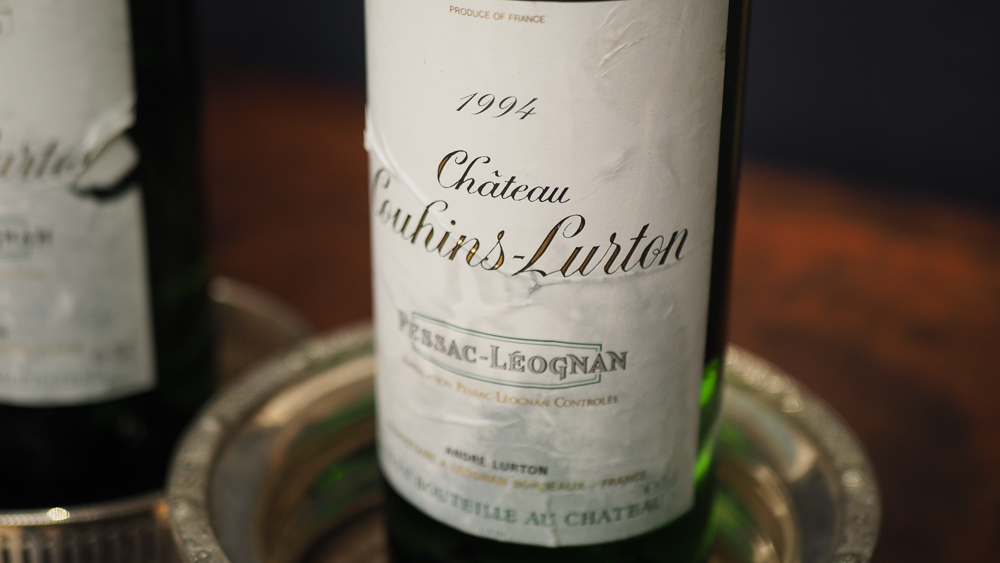
These wines can age. In the cellar they have some wines going back to the 1970s that are still showing well. Low pH is the key. ‘The terroir of Couhins-Lurton, with its limestone soil, brings low pH,’ says Jacques. ‘This helps the wines to age well.’ The challenge is to make a wine that is ageworthy, yet hasn’t lost all its primary aromas. Oxidising the must creates a bomb proof wine where there are no longer any phenolics (these are needed for oxidation to occur), but at the same time a lot of the primary, fruity aromas can be lost. So pressing is very important for style. At Couhins-Lurton they allow of a bit of oxygen exposure during pressing itself, but then protect the juice, in order to get this balance right.
‘Denis Dubourdieu helped us to develop wines that are aromatic, and are authentic to the variety,’ says Jacques. ‘When I came back from Australia in 1995 after two vintages, I definitely understood so much about that, because the Australians already knew how to protect their juices under gas, and how to express the aromatic potential of their varieties. More than anyone, Brian Croser, who I worked for, knew all about that. When I came back I started using nitrogen and carbon dioxide. It was really the early days of juice protection and trying to express the varietal potential. In the old world we didn’t care so much about the varietal potential.’
‘We don’t use gas during the pressing, but then when the juice is in the tank for settling we sparge with nitrogen to remove dissolved oxygen,’ he says. So there is a little bit of juice oxidation during pressing itself, but then no more during settling and onwards in the winemaking process.
Jacques explained why today so many white wines are ageing so fast, especially with the problem in Burgundy with premature oxidation of whites that people had assumed would age. It’s because the grapes are now being picked riper, with lower acidity and higher potential alcohol, and then they are being protected during pressing. Chardonnay can take oxygen during pressing, and coupled with the way grapes used to come into the winery with higher acidity, this meant they’d age longer in bottle – indeed, they needed bottle age. Winemakers have travelled, and applied the same technology, protecting their wine juices with inert gases, resulting in extremely aromatic wines. This has the side effect of making wines that don’t have the capacity to age that they used to. ‘They are picked at very different times and made with different technology,’ he says.
A word on closures. We looked at two examples of the 2006 vintage, one under cork and one under screwcap. They were completely different wines. ‘Whenever we taste 2006, it is a winner because it has everything. It has the aromatic profile, the mouthfeel, and an amazing acidity.’
‘There is nothing wrong with the wine under cork: it is just very different in style after so many years,’ says Jacques. ‘Because I’ve mostly made my career in the new world, I’m a fan of screwcap. Our father, pushed a little bit by my brother and I, started to put screwcap closures on his Pessac-Leognan whites in 2003. He did it for only half of his production. 10 years later, in 2013, he was still the only one in Pessac-Leognan under screwcap. So he was pushed to abandon this closure unfortunately, because most of the markets didn’t understand why he was the only one under screwcap.’ Now, the range is sealed with taint-free technical corks: DIAM.
‘We have done several blind tastings with journalists, and every time the wine under screwcap wins. But no one in Bordeaux, at that level, wants to go under screwcap. This is the end of the story. It’s what we call the French resistance.’ Jacques has reinstated a screwcap line on the bottling line, and will try again with the Stelvin Lux, which doesn’t look like a screwcap externally.
THE WINES
Château Couhins-Lurton Blanc 1994 Pessac-Léognan, Bordeaux
‘1994 was a nice vintage for white wines in Pessac-Léognan,’ says Jacques Lurton. ‘There is fat in the mouth, it is a very oily style of Sauvignon Blanc.’ Powerful and intense with lovely direct citrus fruit and some notes of fennel and apricot. This is fresh and intense with good structure and beautiful grapefruit, smoke and pear notes. Lovely intensity. There’s no sense of tiredness here, with good acidity and lovely fruit. So amazing! 95/100
Château Couhins-Lurton Blanc 1995 Pessac-Léognan, Bordeaux
A difficult vintage for whites. This is fresh and intense but with some woody, nutty notes. There’s a touch of evolution here, but it’s still very much alive with grapefruit and lemons, and some fine spices. Lovely quince and citrus fruit here. Very fine and expressive, and beautifully evolved. 94/100
Château Couhins-Lurton Blanc 2003 Pessac-Léognan, Bordeaux
2003 was the heatwave year. ‘In Bordeaux, we had three weeks during the month of August at 40 C heat,’ he says. ‘It was extremely hard to live.’ Jacques didn’t make this wine, but he says the pH was 3.23, which is really low considering the warmth of the year. ‘This is amazing, it’s unique. It means this limestone soil has the capacity for bringing a sufficient amount of water, and always keeping the pH extremely low. It allowed us to produce this kind of year: there’s aren’t many wines from this vintage that can claim to be as fresh as this wine.’ Concentrated and taut with a bit of structure. Has fresh compact citrus fruit with nice intensity, and notes of hay and aniseed sitting under the fruit. Lovely fruit intensity here with a touch of mint on the finish. Very structured. 94/100
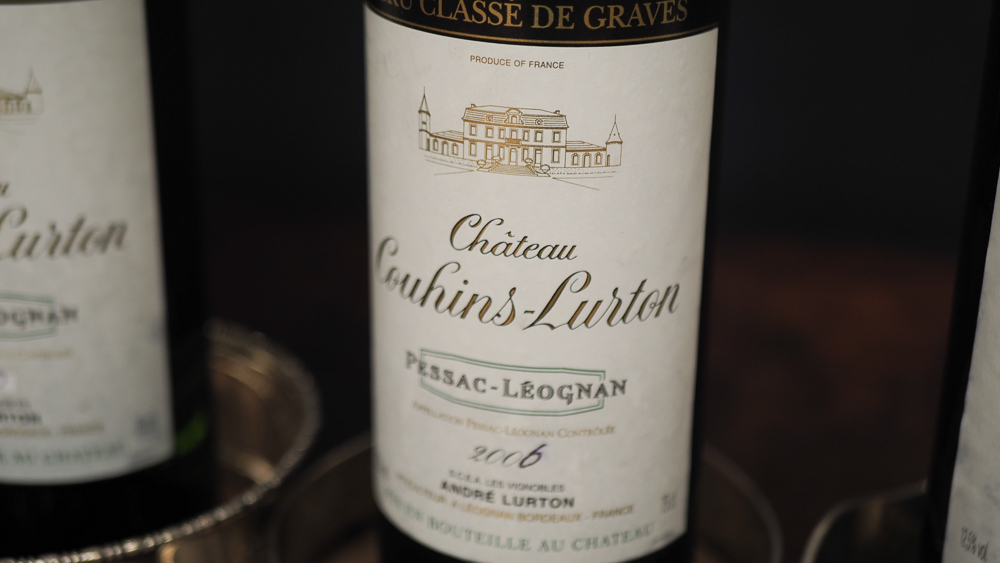
Château Couhins-Lurton Blanc 2006 Pessac-Léognan, Bordeaux (screwcap)
Really lovely aromatics. Grapefruit and lemons with a touch of elderflower and some boxwood. The palate is powerful and intense with keen acidity, some lime blossom, a touch of pith and good acidity. Very fine and expressive, with a taut personality. 95/100
Château Couhins-Lurton Blanc 2006 Pessac-Léognan, Bordeaux (cork)
Some honeyed notes here with a toasty edge to the ripe pear and white peach fruit. Oily and slightly bitter with some lovely pear and white peach fruit. There’s a brightness, but also a bit of evolution with good acidity. 93/100
Château Couhins-Lurton Blanc 2010 Pessac-Léognan, Bordeaux (screwcap)
Wonderful grapefruit and smoke nose with vivid citrus fruit and a touch of pear. The palate is pure, vivid and intense with hints of elderflower and melon, with keen acidity and lovely taut citrus on the finish. Very fine and expressive, and still youthful and pure. 94/100
Château Couhins-Lurton Blanc 2018 Pessac-Léognan, Bordeaux (Diam cork)
Pristine and bright with lovely crisp citrus fruit, and some pear and white peach. Mineral and expressive with some fine spices as well as ripe fruit. It’s accessible, rounded and quite fine. Has an expressive character to it, from the warm vintage. 93/100
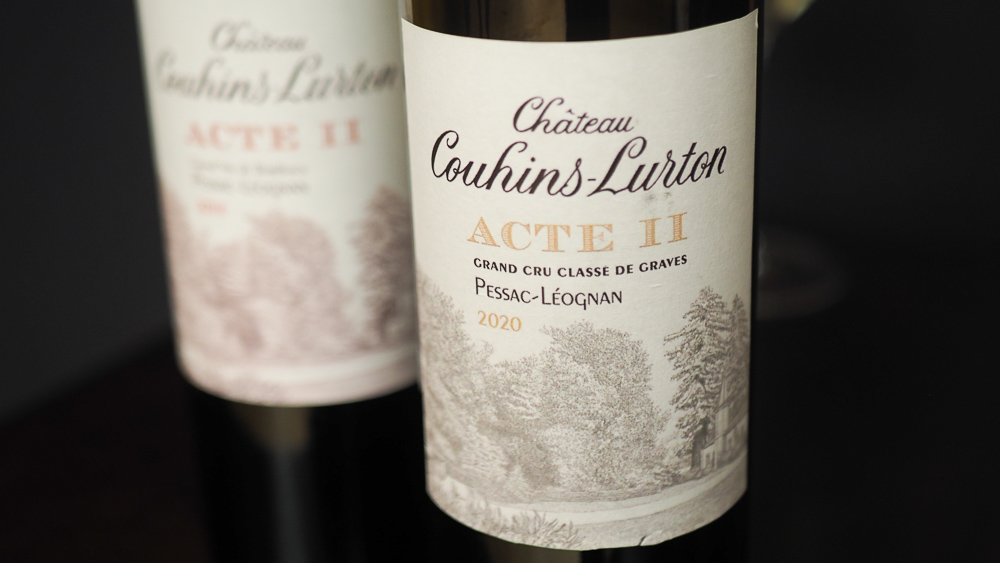
Château Couhins-Lurton Acte II Blanc 2020 Pessac-Léognan, Bordeaux
Really fresh and aromatic with lovely direct citrus fruit, with some elderflower and passionfruit as well as direct pear and lemon notes. So pretty and expressive with great purity and lovely linear fruit. Has an amazing acid line. 94/100
Château Couhins-Lurton Acte II Rouge 2019 Pessac-Léognan, Bordeaux
Supple and fresh with a nice finesse to the cherry and blackcurrant fruit. Has fruit purity with fine grained cherry notes and a touch of spice. Very nice fruit purity here with fine-grained tannins. 93/100
Find these wines with wine-searcher.com

